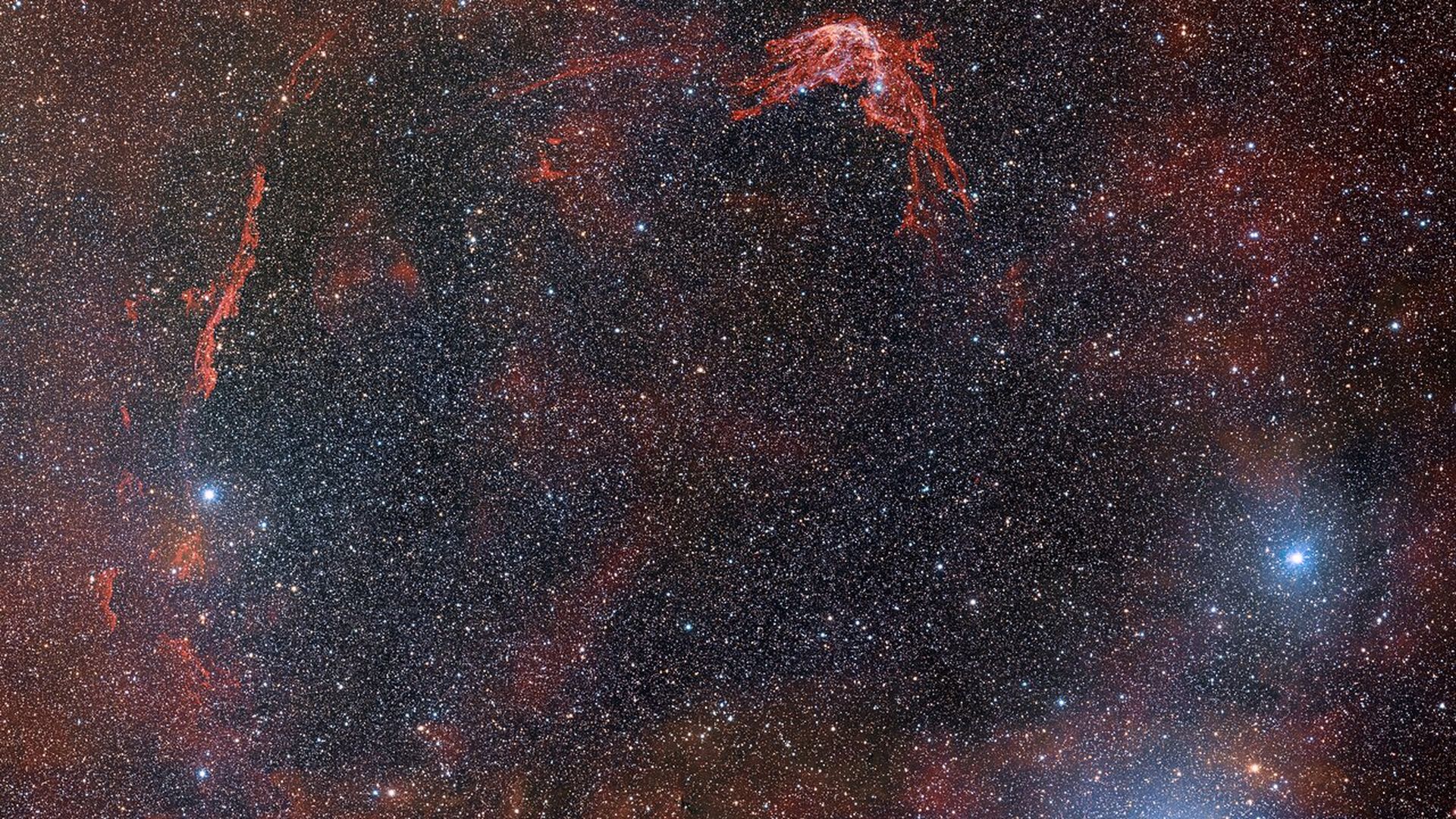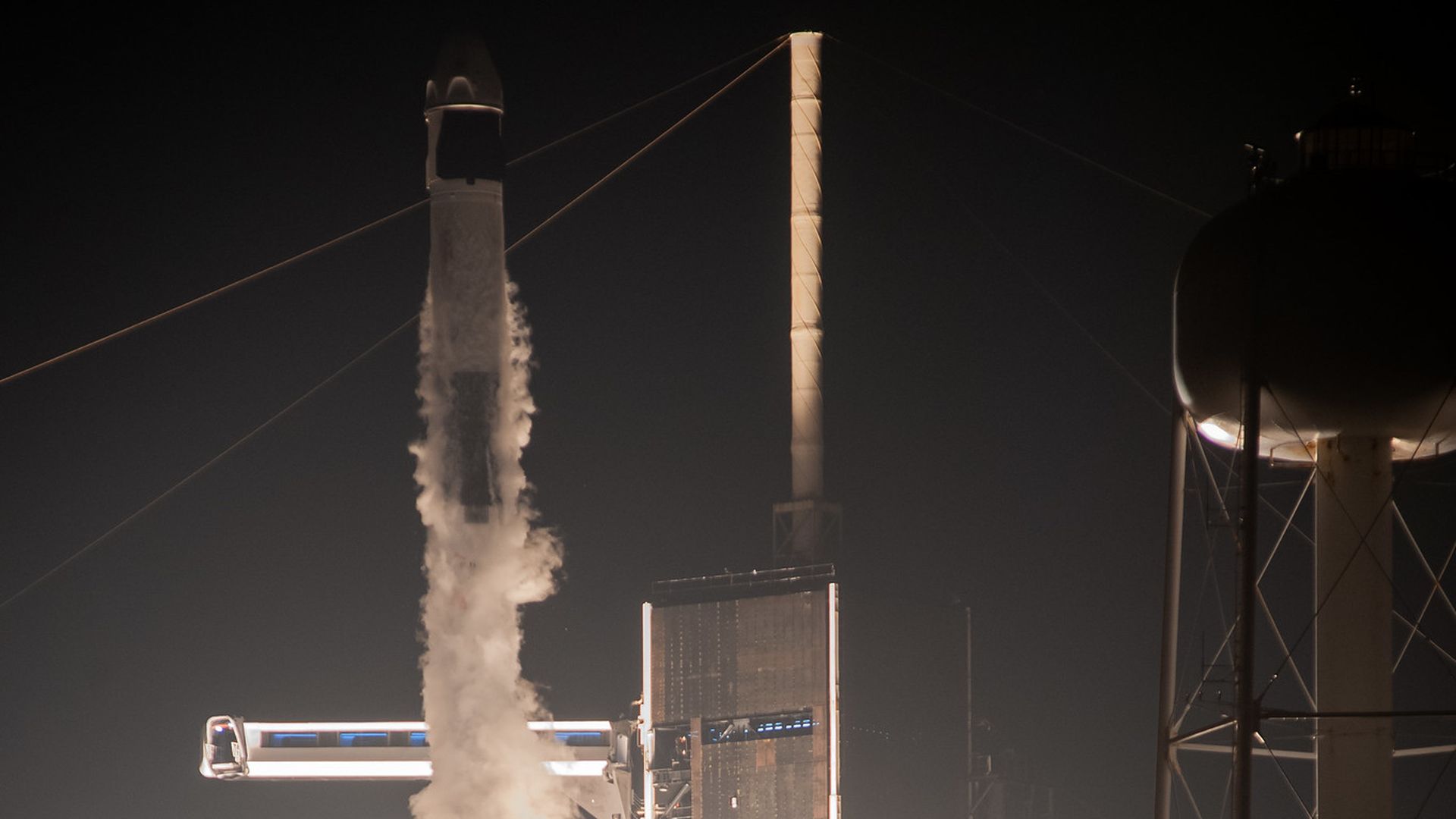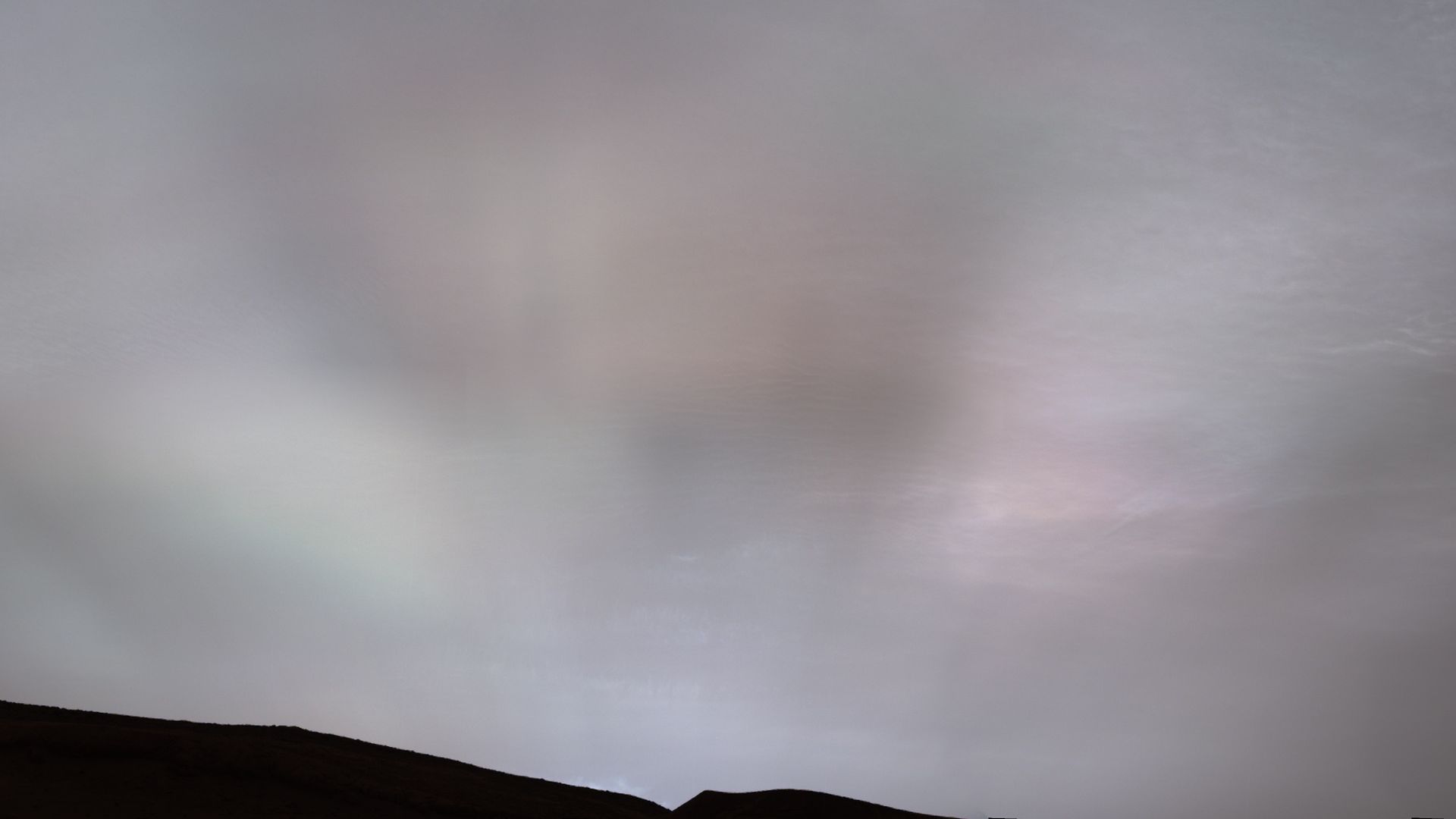| | | | | | | Presented By Babbel | | | | Axios Space | | By Miriam Kramer · Mar 07, 2023 | | Thanks for reading Axios Space. At 1,289 words, this newsletter is a 5-minute read. - Quick programming note: I'm going on a little family vacation, so this newsletter will be taking a week off. See you back here in two weeks.
Please send your tips, questions and smart space AIs to miriam.kramer@axios.com, or if you received this as an email, just hit reply. | | | | | | 1 big thing: The golden age of Earth observation |  | | | Illustration: Natalie Peeples/Axios | | | | From monitoring deforestation in real time to tracking greenhouse gas emissions and fact-checking claims made during wars, satellite data is providing an unprecedented view of what's happening on the ground each day. Why it matters: Speedy and precise big data analytics tools are revolutionizing how massive amounts of satellite data are used. - The "biggest shift in last few years is the maturation of artificial intelligence systems that now enable us to build a truly 'living' map of the world," Steve Brumby, CEO of Impact Observatory, tells Axios.
What's happening: Microsoft and Planet used AI to create a building damage assessment tool to monitor the destruction in Ukraine. That tool was then applied to monitor building damage after the earthquake in Turkey in February and was deployed in a matter of days. - By using big data processing techniques to analyze large data sets, Global Fishing Watch was able to track ships that are illegally fishing as they change identities at sea, according to a study published earlier this year in Science Advances.
- Big data analysis is also allowing organizations to track deforestation as it happens, potentially stopping it at its source instead of simply using satellite data to track how much forest was lost over the course of any given year.
Between the lines: The cost of launching satellites to orbit has decreased in the last 15 years, and the cost of making high-powered but small satellites has also fallen, allowing companies to launch more cheaply and with a higher return. - We have "seen a 1,000x increase in cost performance of satellites," Planet CEO Will Marshall tells Axios. "That's the mainframe to desktop computer revolution equivalent."
- Private companies also carved out niches in the industry by doing different work from publicly operated satellites.
- Those organizations are creating not just more imagery data, but different data — showing the Earth in different wavelengths of light, for example — that can also be used in a variety of industries.
The intrigue: High-powered analysis tools are also letting companies and organizations combine different data sets, yielding new insights. - The company Esri uses satellite and other data to create geographic information systems that can tell users not just where objects are but offer insights into how to best solve problems — like where to plant trees or what part of a city needs better access to broadband.
- Satellite data, in this case, is "like a water hose of additional data that can help us update our other data," Jack Dangermond, president of Esri, tells Axios.
Yes, but: There likely aren't that many more customers out there who are just waiting for satellite data to fall into their laps, the Secure World Foundation's Krystal Azelton tells Axios. - Continued expansion in this part of the industry could be found in customers who need a little more help to find applications for this data and analysis in their industries.
- Those harder-to-reach customers could be having trouble figuring out how licensing this type of data works or perhaps they don't have the analysis capabilities to work with the data effectively themselves, Azelton added.
- "Training, adoption, awareness, education is limiting the uptake of these new tools, not whether or not we can extract out the information," Marshall said.
|     | | | | | | 2. Solving sticky Moon dust |  | | | Illustration: Aïda Amer/Axios | | | | Think of how irritating dust in a home can be. Now imagine how much worse it could be if it were Moon dust — electrostatically charged, clingy as packing peanuts, and abrasive as ground fiberglass, my colleague Christine Clarridge writes in Axios Seattle. Driving the news: Washington State University researchers discovered that a liquid nitrogen spray could remove more than 98% of the lunar dust from spacesuits. - The research published last month in Acta Astronautica was supported by a grant earned by researchers whose idea took the top prize at NASA's Breakthrough, Innovative and Game-changing (BIG) Idea Challenge.
Why it matters: Not only does lunar dust pose a danger to astronaut health, it's "like running coarse sandpaper over billion-dollar instrumentation and equipment," said NASA. WSU researchers explained further: - During the Apollo missions in the 1960s and early 1970s, astronauts tried unsuccessfully to remove the dust from their spacesuits with a brush.
- The tiny particles got into engines, electronics and spacesuits where they destroyed seals, wearing them down.
- Astronauts also suffered from "lunar hay fever," and researchers think longer exposure to the dust could cause lung damage similar to that of black lung disease.
What they're saying: "It posed a lot of problems that affected the missions as well as the astronauts once they returned home," said Ian Wells, the paper's first author and a senior in WSU's School of Mechanical and Materials Engineering. What's next: The researchers are now working to fully understand and model the complex interactions between the dust particles and liquid nitrogen that allow the cleaning process to work. - They are also applying for another grant to test the technology in conditions that more closely approximate outer space.
💭 My thought bubble: This kind of research could be particularly relevant in the future as nations aim to send people to the lunar surface. - And if you're in the Seattle area, I highly suggest subscribing to Axios Seattle. (If you aren't in Seattle, check out our other local newsletters that might just serve your city.)
|     | | | | | | 3. Re-examining the first recorded supernova |  | | | Supernova remnant RCW 86. Photo: CTIO/NOIRLab/DOE/NSF/AURA | | | | New observations from a powerful telescope in Chile are revealing the aftermath of a supernova that lit up the sky more than 1,800 years ago. Why it matters: Learning more about the fallout of extreme cosmic explosions — like supernovas — can help scientists piece together why our universe looks the way it does. What's happening: The Dark Energy Camera has taken a wide view of the supernova remnant, RCW 86, revealing it in new detail. (The supernova itself is named SN 185.) - The new, wide photo shows how much the supernova remnant looks like the "tattered remains of a burst balloon," as the NOIRLab press release poetically puts it.
- Scientists originally thought RCW 86 was too diffuse to have been created by the supernova, but previous research has shown that the supernova exploded when a white dwarf star sucked matter from a companion, eventually destroying it in a bright, fast-moving blast.
- "These supernovae are the brightest of all and no doubt SN 185 would have awed observers while it shone brightly in the night sky," NOIRLab wrote in the statement.
Background: The supernova was originally seen in A.D. 185 by Chinese astronomers, who referred to it as a "guest star," NOIRLab said. - The supernova stayed in the sky before fading from view for about eight months.
|     | | | | | | A message from Babbel | | The secret to language learning | | |  | | | | Context is key when it comes to learning a new language. That's why Babbel offers courses and tips that provide important cultural knowledge while you learn. Even better: You can learn a new language in just 3 weeks with daily practice using Babbel. Get 55% off a subscription now. | | | | | | Bonus: That time Scott Kelly REALLY lost his luggage | | Scott Kelly isn't kidding, either. - When Kelly was already on the International Space Station for his yearlong mission in 2015, a SpaceX rocket carrying cargo to the ISS failed just after launch.
- Before that failure in June 2015, a Russian cargo vehicle bound for the station also failed to make it to the ISS in May. Both of those failures came after a rocket explosion in October 2014 destroyed a cargo craft meant to resupply the station.
- Subsequent missions brought gear, food and other necessities to the station and none of the crew members were in danger from the delay, but those rocket failures obviously made things a little harder on Kelly during his year in space.
|     | | | | | | 4. Out of this world reading list |  | | | A Falcon 9 rocket launch carrying a crew to the ISS. Photo: NASA/Kevin O'Connell and Kevin Davis | | | | 🔭 Hubble Space Telescope faces threat from satellites (Shannon Hall, New York Times) 🌎 NASA shifts the focus of the suborbital crew program (Jeff Foust, SpaceNews) 🚀 The small launch industry is brutal (Eric Berger, Ars Technica) 👨👨👦👦 SpaceX launches a crew of four to the International Space Station (Axios) |     | | | | | | 5. Weekly dose of awe: Here comes the Sun... on Mars |  | | | Photo: NASA/JPL-Caltech/MSSS/SSI | | | | Mars is a wholly alien planet, and yet sometimes it looks eerily like Earth. - This photo, taken by NASA's Curiosity rover, shows the Sun's rays shining through clouds from the Red Planet's surface.
- "It was the first time that sun rays, also known as crepuscular rays, have been viewed so clearly on Mars," NASA wrote in a description. "Crepuscular is taken from the Latin word for 'twilight,' as these rays appear near sunset or sunrise."
|     | | | | | | A message from Babbel | | Learn a new language — your way | | |  | | | | Everyone learns differently when it comes to studying a new language, no matter their experience level. The solution: Babbel helps users speak a new language in just 3 weeks with lessons, podcasts, games and more. Get 55% off a subscription for a limited time. | | | | 🛰 Big thanks to Alison Snyder for editing, Sheryl Miller for copy editing, and the Axios visuals team for the illustrations. If this newsletter was forwarded to you, subscribe. |  | | Are you a fan of this email format? Your essential communications — to staff, clients and other stakeholders — can have the same style. Axios HQ, a powerful platform, will help you do it. | | | | | | Axios thanks our partners for supporting our newsletters.
Sponsorship has no influence on editorial content. Axios, 3100 Clarendon Blvd, Arlington VA 22201 | | | You received this email because you signed up for newsletters from Axios.
To stop receiving this newsletter, unsubscribe or manage your email preferences. | | | Was this email forwarded to you?
Sign up now to get Axios in your inbox. | | | | Follow Axios on social media:    | | | | | |
No comments